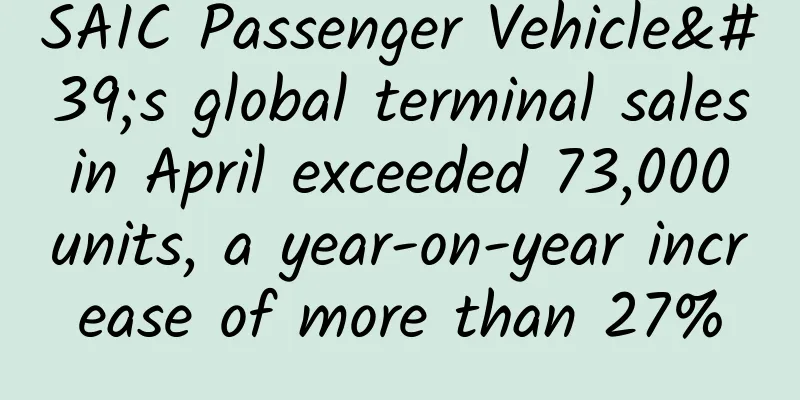Pinduoduo’s bargaining logic and strategic marketing methods!

|
Many people often receive price-cutting links from Pinduoduo on WeChat, and are very disgusted with this disruptive promotion method of Pinduoduo, but this marketing method is one of Pinduoduo's most effective marketing methods. Pinduoduo’s latest financial report shows that its active users have reached 628 million, less than 100 million away from Taobao’s 726 million. It took Pinduoduo just over two years to go from 200 million to 600 million active users. In the future, it is highly likely that Pinduoduo's active users will exceed Taobao's. Pinduoduo's rapid development is inseparable from marketing that leverages social relationships on WeChat, and among these, the most successful marketing is the one that involves bargaining and getting things for free. Today, Xunkong will review why Pinduoduo’s price-bargaining marketing is so successful. 01 The logic of bargaining on PinduoduoI said in my article “A Brief History of Social Fission” that Pinduoduo is the epitome of social fission marketing methods. On Pinduoduo’s homepage, there are many ways for consumers to “get a bargain”, such as “make a lot of money”, “get cash every day”, “bargain and get it for free”, etc. All of them take advantage of consumers’ desire for bargains and use social fission to develop platform users. Among these, the most popular and most effective marketing methods among users are “getting cash every day” and “bargaining for free”. The routines of receiving cash every day and getting something for free by bargaining are basically the same. Taking bargaining for free as an example, the basic process is that A sees a product that can be obtained for free on the site. After a series of operations, the progress bar of the free product shows that it has reached more than 90%. If A wants to bargain again, he needs to invite friends on WeChat for help. At this time, A sends the bargaining link to B for help. After bargaining, B finds a new world of bargaining, so he also joins the bargaining for free camp. In this way, more and more users are added, and its process is as shown in the figure below. But in the actual bargaining process, A usually sends the bargaining link to at least dozens or even more than 100 people. Among the more than 100 people who received the link, some will create new bargaining links and send them to more than 100 people again. This process will be endless. The logic behind Pinduoduo's "bargain and get it for free" is to guide users to advertise for themselves. Users send the bargaining link to others. If the other party does not bargain, at least they see the information, and they have helped Pinduoduo advertise for free. If the other party helps to bargain, they need to download and register the APP, which means they have helped the platform develop a user. Some users' feelings towards Pinduoduo's bargaining marketing went from being disgusted to being helpful, to trying it themselves, to finally getting the product for free, which they found really great. 02 Why is Pinduoduo’s bargaining link so effective?
Any rational person knows that there is no free lunch in the world, but the reality is that most people are irrational when faced with issues of interest. The word "free" is the most attention-grabbing copy in marketing. Most people's eyes light up when they see the word "free" and they can't wait to get the free stuff immediately. There is probably not enough space in a book to describe all the tricks of “free” marketing. The phrase "You have a chance to get it for free" can increase the click-through rate several times. An event of "free prize grabbing, no money if you don't win" can attract a large number of people. Pinduoduo’s “bargain and get it for free” policy first attracts your attention.
In the book "Games Change the World", the author proposed four major elements of games: goals, rules, feedback, and voluntary participation. Many activities on Pinduoduo are very gaming in nature and can be regarded as a model of "gaming-style e-commerce". The "bargain and get it for free" campaign does a very good job in these four elements, not to mention voluntary participation. First of all, the goal is clear and you feel that this goal is relatively easy to achieve. The progress bar of a bargaining activity generally does not start at 0. Once you enter the activity and start the bargaining phase, you basically don’t need to use your social relationships, and the progress bar will reach more than 90%. This will greatly increase users’ confidence and make them feel that achieving this goal is easy. In the picture below, I tested an activity of bargaining for free. Without inviting friends to bargain (sharing in group chat can actually just jump, not really share), and only operating within the site, the activity was only 1.87% away from completion. This is very important. If the entry bar only goes from 1% to 2% and then to 3%, I am afraid most people will give up at the beginning. Secondly, the rules are of course clear. The more people you invite to bargain, the closer you are to getting it for free. Last but not least, the feedback mechanism for bargaining is very good. Every time you invite someone to help bargain, the progress bar moves a little bit. Especially in the later stages, the words "just left" and "almost done" make you excited and motivate you to invite more people to participate. There is also a time limit for bargaining, usually 24 hours. The closer the time is and the closer you are to a deal, the faster you should invite your friends.
Pinduoduo's bargaining system has a very "scamming" design, which is that the further you bargain, the lower the amount you can bargain for each time. Usually, when the price is over 99% but not yet 100%, the amount you can bargain for by inviting one person is only 0.01 yuan, which means that reaching 100% may require 100 or even more people to help with the bargaining. It's like playing a game, the further you go, the harder it becomes to pass a level. Many users are in a very useless situation at this stage. They continue to invite friends to join, but the progress is very slow. They give up, but are unwilling to see their efforts go to waste. At this time, sunk costs begin to play a role. Once you give up at this stage, it means that all your previous efforts will be in vain, so most people still bite the bullet and continue to invite friends to bargain. Here, Pinduoduo has made full use of the "loss aversion" of most people. This design, which seems "scamming" to users, is exactly what Pinduoduo did deliberately. This design of Pinduoduo drives many users crazy, but they have to find ways to bargain. There is almost a "bargaining science" on how to bargain. Users find various groups to bargain with each other, or find people to bargain on their behalf. They try every possible way to do this. There is an APP called Hulibang, which is almost an APP dedicated to Pinduoduo's bargaining tasks. The free gimmick and game-like e-commerce design made Pinduoduo's bargaining marketing extremely successful and also enabled it to develop rapidly with the help of WeChat's social relationships. 03 Bargaining: Pinduoduo’s most efficient marketing toolPrevious promotion models were generally media-centric, using media to spread product information to consumers, allowing consumers to move from noticing to remembering and then downloading to becoming users. Pinduoduo has also used brainwash advertising such as "Pinduoduo, the more you work, the more you save." The disadvantage of this type of advertising is that its effectiveness is difficult to measure. Pinduoduo's price-cutting marketing directly promotes downloads through social relationships. This marketing method is much more efficient than traditional advertising, and the money it spends brings in users to download.
As competition in mobile Internet applications becomes increasingly fierce, the cost of acquiring a customer for an APP has generally exceeded 100 yuan, and the efficiency of advertising, local promotion, online and offline activities, etc. is becoming increasingly lower. Pinduoduo’s price-bargaining marketing is a high ROI marketing, and its high ROI is reflected in its multi-detailed settings. If user A invites user B to bargain, user B needs to download and register to help bargain. Once B helps bargain, he becomes a platform user. A usually sends the bargaining link to his relatives and friends. With almost one bargaining attempt, he can develop dozens of friends around him. Although high-end users are always full of resentment about this marketing method, its fission power in the sinking market is very great. In terms of bargaining marketing methods, new users can bargain more than old users. In the later stages, old users can basically only bargain for 0.01 yuan each time, while new users can bargain for 1 yuan or even more. In the daily cash-receiving activity shown in the picture below, the platform assigned me to develop this new user based on my social relationships (but I won’t be fooled). Therefore, Pinduoduo's price-cutting marketing basically has a single customer acquisition cost of a few dollars or even less, which is almost impossible to achieve today when the promotion cost is getting higher and higher. Pinduoduo's bargaining marketing costs are dynamically controllable. Once the number of participants in the event increases, it will increase the difficulty, and even use a killer move in the cash-receiving event to turn 100 yuan into two 500-50 limited-time coupons. In this case, the platform has acquired the new users you have worked so hard to attract at almost zero cost. Do you want to cry to the customer service that you were cheated? Sorry, that's because you didn't read the rules carefully before.
Pinduoduo has more than 600 million active users, which is closely related to its effective use of WeChat. For general platforms, if a user registers but does not use the platform for a long time, the probability of him using the platform will become lower and lower until he uninstalls the platform. Pinduoduo's price-bargaining marketing minimizes this unfavorable factor by leveraging social relationships. Once user A participates in a bargaining activity and invites user B to help bargain, user B, who has not used Pinduoduo for a long time, may be awakened again and enter the platform to consume again. If user A sends the bargaining link to 100 friends, dozens of zombie users may return to the platform. In this era, many apps will do whatever it takes to increase user activity. For example, when logging into a website on a PC, you must scan it with a mobile app. The apparent reason is security, but the main reason is to increase activity. Pinduoduo's bargaining activity is an important activity to increase the activity of the platform. In my opinion, Pinduoduo will not stop this activity until all WeChat users are dug out.
In the early years, Pinduoduo was considered to have most of its users outside the Fifth Ring Road, but it has always found it difficult to break into first- and second-tier cities. Price-cutting marketing is its powerful weapon to enter first- and second-tier cities. In the early years, you may have never heard of Pinduoduo, or you may have only heard of it but never used it. Suddenly one day you received a Pinduoduo bargaining link from a relative in a 18th-tier city asking you to bargain. This trick is very powerful. WeChat is a social software for acquaintances. Most of the people in your address book are either relatives, classmates, or friends. If these people send you a link to bargain, would you have the nerve to refuse? If you can't refuse, you will contribute a user to Pinduoduo's entry into first- and second-tier cities. 04 Conclusion: Bargaining is a marketing activity with strategic value"Bargain and get it for free" may seem like just one of the countless activities on Pinduoduo's website, and one of Pinduoduo's countless marketing activities, but this marketing activity has important strategic value. On the user side, bargaining activities rely on WeChat relationships to acquire new users with extremely high ROI, thereby increasing user activity and continuously pushing up market value. On the market side, price-bargaining activities allow Pinduoduo's users to develop across regions, and easily break into the first- and second-tier markets from the sinking market, achieving the so-called breaking the circle. Therefore, Pinduoduo’s “bargain and get it for free” is not a marketing tactic issue, but a marketing strategy issue. This strategy will continue. As mentioned earlier, Pinduoduo will not stop this activity until all the WeChat users are dug out. Author: Xunkong's Marketing Revelation Source: Xunkong’s Marketing Revelation (xunkong2005) |
<<: Xiaohongshu User Operation Strategy Analysis Report
>>: Wu Zhihong's 2022 Annual Lecture: Psychology of Getting Things Done
Recommend
Foreign article analysis: Can you really give up Android and start iOS development?
[[136571]] Do you still have unanswered questions...
Clear waves protect the central axis. How did the water system of the central axis evolve?
Beijing is a city with a dense network of rivers ...
One day, when AI learns to smell...
**The sense of smell is one of the earliest sense...
Li Xueni: A compulsory course for parents of adolescents
Li Xueni's compulsory course for adolescent p...
For the first time in 70 years, this international science award goes to China
On October 24, 2023, Beijing time, the American P...
In a blink of an eye, crayfish shells have been transformed from "kitchen waste" into "little experts" in capturing microplastics!
Author: Shi Xiangqi and Li Chuanfu Microplastic p...
3 steps to build an operational indicator system
How do operators use core capabilities to build a...
8 practical directions for community operations!
Nowadays, WeChat groups, QQ groups, Weibo groups,...
Keep competitive product analysis report!
The body is the capital of revolution. After the ...
Second category e-commerce丨Practical information! Teach you how to do product launch testing!
In the previous issues, we talked about the produ...
Why do I hate Safari so much right now?
If there is one thing that developers hate the mo...
iOS 9 Human Interface Guidelines: UI Design Basics
1.1 Designing for iOS iOS embodies the following ...
The loyal "guardian" of warmth and quality: cork oak
Thermos bottles are essential daily necessities f...
Zhuanghe SEO Training: How to solve the problem of slow website loading speed?
I believe that many people have had the experienc...









